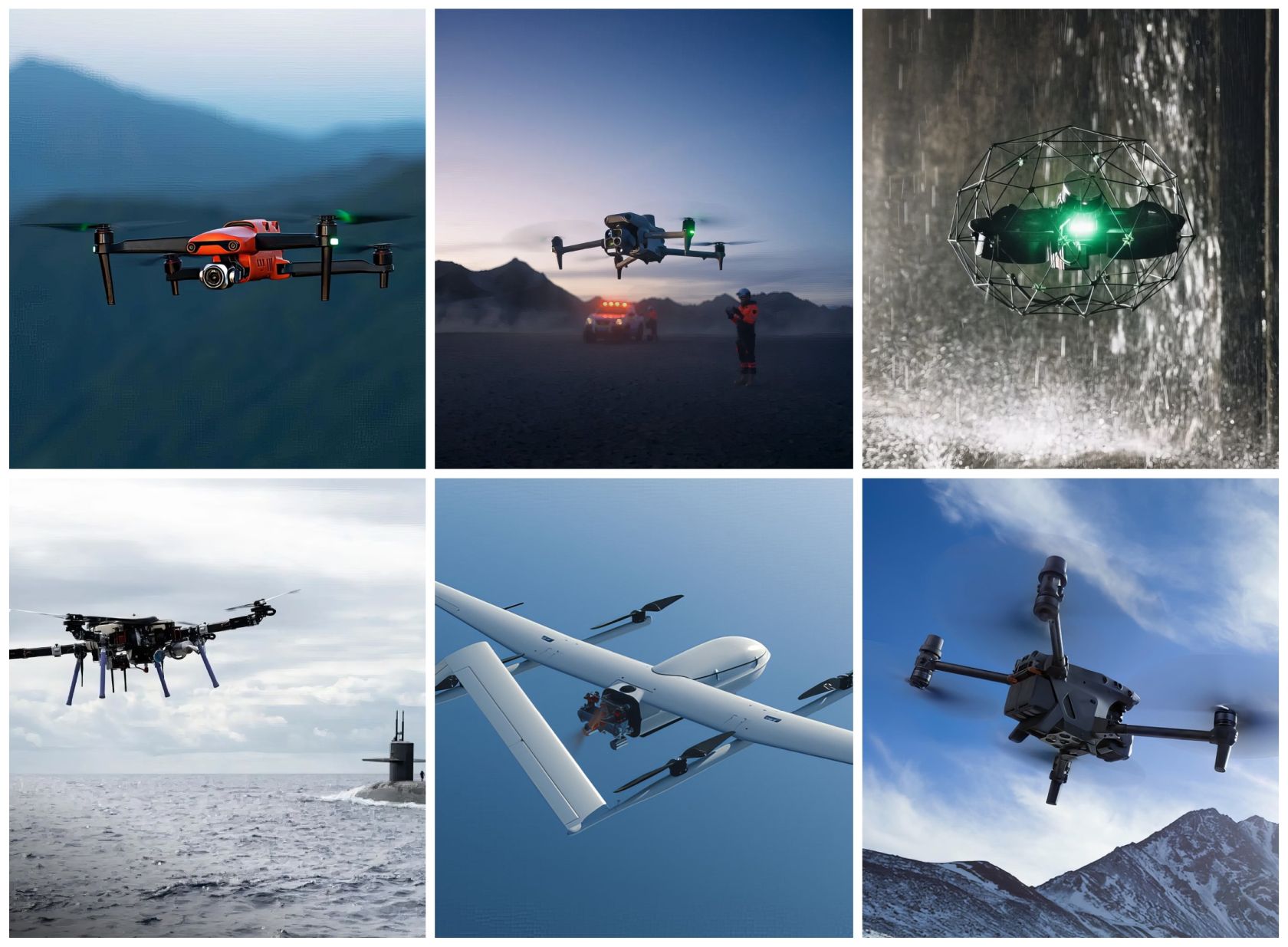Ever been on the hunt for the best spy drone models, only to find yourself drowning in a sea of specs, antennas, and confusing battery times? Maybe your last flight ended with a blurry photo or a dropped signal right when things were getting interesting.
You’re not alone.
It’s a common headache, especially with countless surveillance drones, DJI Mini copters, and other flying gadgets all promising pixel-perfect clarity and ninja-like stealth.
Just last year, top-tier models like the DJI Matrice 4T completely changed the game for aerial surveillance. These drones now come loaded with thermal imaging systems, real-time kinematic precision for mapping, and intelligent wireless networks built for serious reconnaissance missions.
I’m going to walk you through six of the absolute best drones for everything from long-range flights to tricky indoor inspections. Let’s cut through the noise together and find a model that’s actually built for the flights that matter.
Key Takeaways
The DJI Matrice 4T is the best overall spy drone for 2025. It features a 48 MP triple-camera setup, a laser rangefinder that reaches up to 1,800 meters, and O4 Enterprise video transmission with a control range of 20 kilometers. Plus, you get nearly 45 minutes of flight time.
For long-range surveillance, the JOUAV CW-30E is in a league of its own. It can fly for up to eight hours and cover distances of 200 kilometers. Its hybrid gas-electric power and VTOL capability allow it to carry heavy payloads up to eight kilograms.
The Autel EVO II Pro 6K V3 is the top compact pick for pros on the go. It boasts a large one-inch CMOS sensor for sharp 20MP photos and 6K video, a nine-mile range, and impressive wind resistance. Its Moonlight Algorithm 2.0 delivers outstanding night imaging.
The Skyfront Perimeter 8 excels in industrial use, flying for over five hours. Its FLIR Duo Pro R thermal camera provides both color and radiometric data, and it supports a telemetry range of up to 100 kilometers.
ELIOS 3 is the undisputed champ for indoor missions. Flyability’s real-time SLAM engine allows for precise navigation in confined spaces. Its collision-proof cage and high-res cameras can cut inspection costs by about 20%, according to recent industry reports.
Table of Contents
Key Features to Consider in Spy Drones
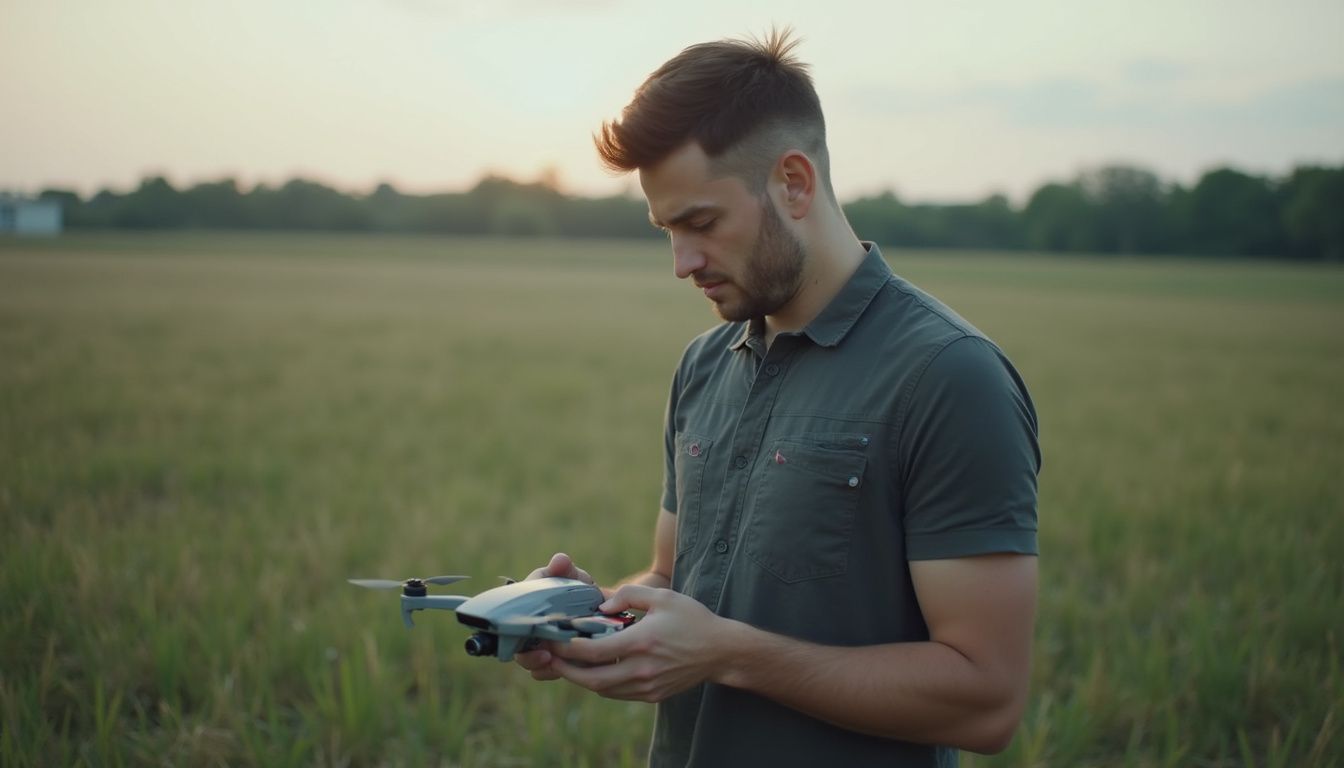
The best spy drones are more than just flying cameras. They combine sharp optics with stealthy operation. The real difference between amateur gadgets and pro-level tools comes down to flight time, range, and rock-solid communication systems.
What camera quality and resolution should a spy drone have?
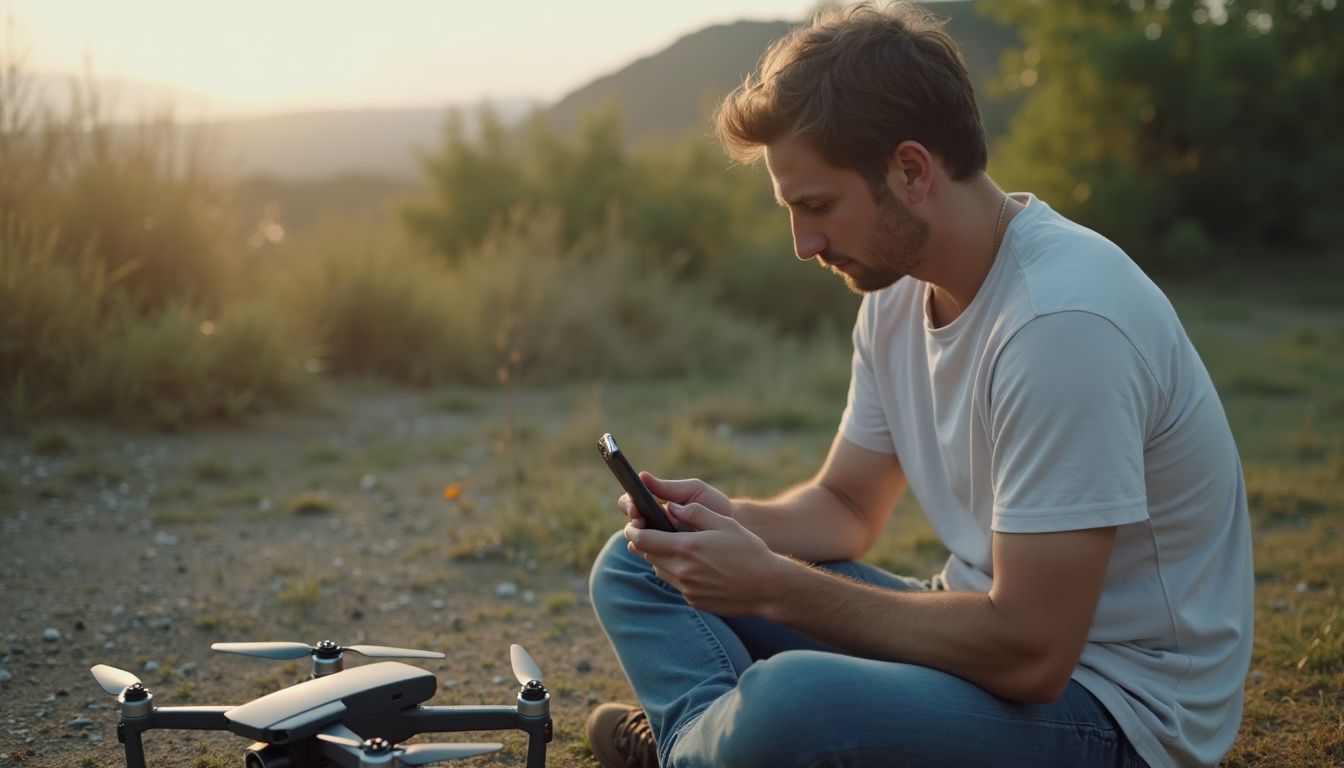
For serious spy work, your drone needs some serious imaging power. High-resolution cameras, think 4K or even 8K, are essential for catching tiny details during aerial reconnaissance.
The DJI Matrice 4T, for example, packs a 20 MP wide camera with a mind-blowing 56x hybrid zoom. I’ve seen it clearly identify license plates from several blocks away.
For top-tier tracking, especially at night, models like the DJI M3T use a combination of a 48 MP RGB camera and a thermal sensor with a 640×512 resolution. This gives you crisp thermal vision, turning your drone into a night owl. A recent report from the Drone Industry Insights confirmed that demand for thermal sensors grew by over 15% in the last year, driven by public safety and inspection needs.
The best systems let you switch between wide, telephoto, and thermal lenses instantly. The Zenmuse H30T camera payload, for instance, features a 40 MP zoom camera and radiometric thermal imaging, allowing you to track subjects even in rain or fog. A wider focal length gives you better situational awareness, while a telephoto lens lets you zero in on a target from a safe distance.
The difference between just seeing something and actually identifying it often comes down to megapixels and zoom capability.
How long do spy drones typically fly on a single battery charge?

Flight time is often the make-or-break stat for a surveillance mission. The DJI Matrice 4T can stay in the air for nearly 50 minutes per charge, which is top-of-the-line for commercial quadcopters.
Other popular models also put up impressive numbers.
- The Mavic 3T with Dock 2 gets close to 45 minutes.
- Skydio X10 hovers for around 40 minutes.
- The Parrot ANAFI USA gives you about 32 minutes before needing a swap.
Fixed-wing designs like the JOUAV CW-30E completely change the game. They can stay airborne for up to eight hours straight thanks to their hybrid gas-electric systems. Tethered drones, which connect to a ground power source, can fly indefinitely, like an electric helicopter you never have to land. This makes them ideal for persistent overwatch at events or on job sites.
Keep in mind that real-world flight times are affected by payload weight, wind speed, and how aggressively you use the camera’s zoom features during aerial imaging.
What is the typical range and connectivity options for spy drones?
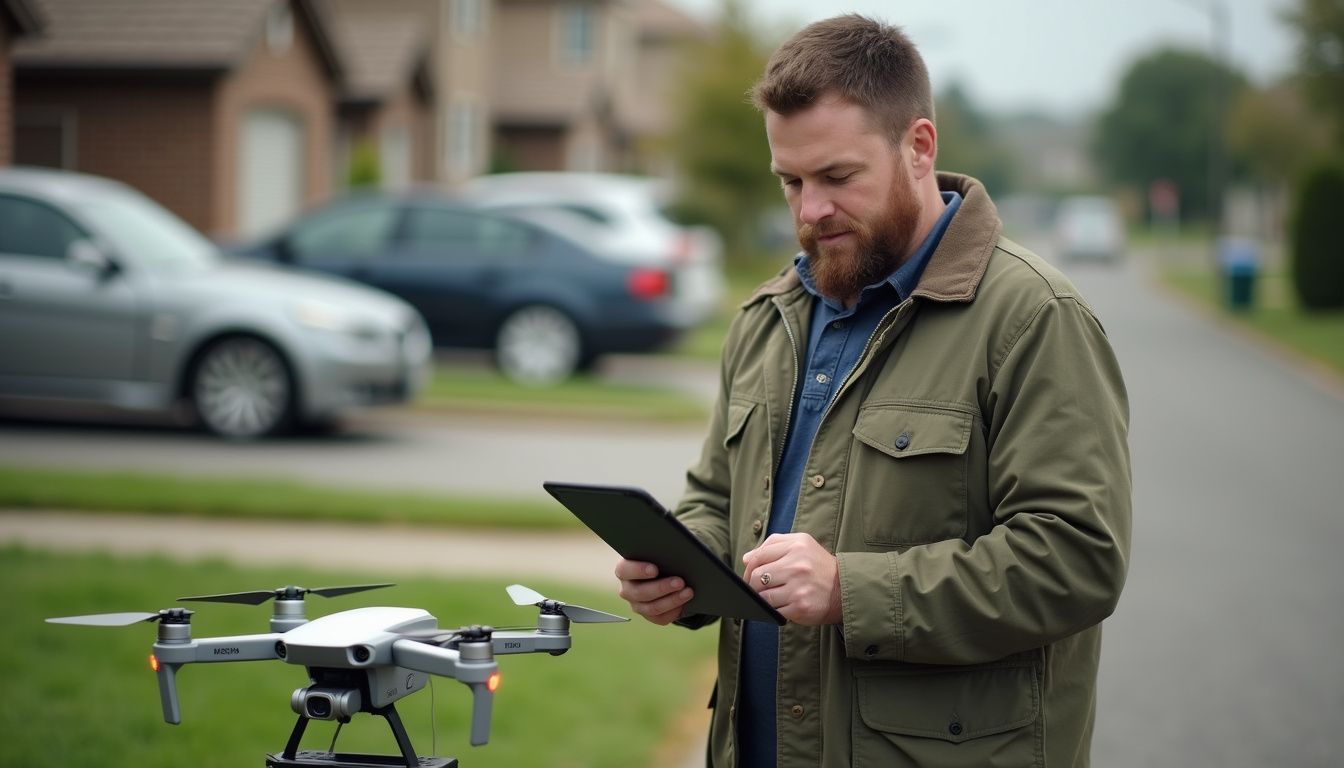
Most modern spy drones operate within a 5 to 15-mile range, but some models are true long-distance champions. The DJI Matrice 350 RTK, when paired with the H30T camera, can reach up to 12 miles, while the Matrice 4T clocks in around nine miles.
The Skyfront Perimeter 8 is in a class of its own, with a stunning telemetry reach of nearly 62 miles. That’s enough range to cover a small city in a single flight.
Advanced connectivity options like LTE and 5G are becoming more common, enabling remote operations from far beyond visual line of sight (BVLOS). For extreme distances, the JOUAV CW-80E can even use satellite links to extend its control radius. Of course, dense forests or urban buildings can interfere with signal strength.
I once tried flying a drone near power lines using only Wi-Fi, and the video feed was a glitchy mess. Switching to a dedicated radio transmitter with frequency hopping spread spectrum (FHSS) technology made all the difference. For more tips on staying private, you can check out these ways to avoid drone surveillance.
How do spy drones maintain stealth during operations?
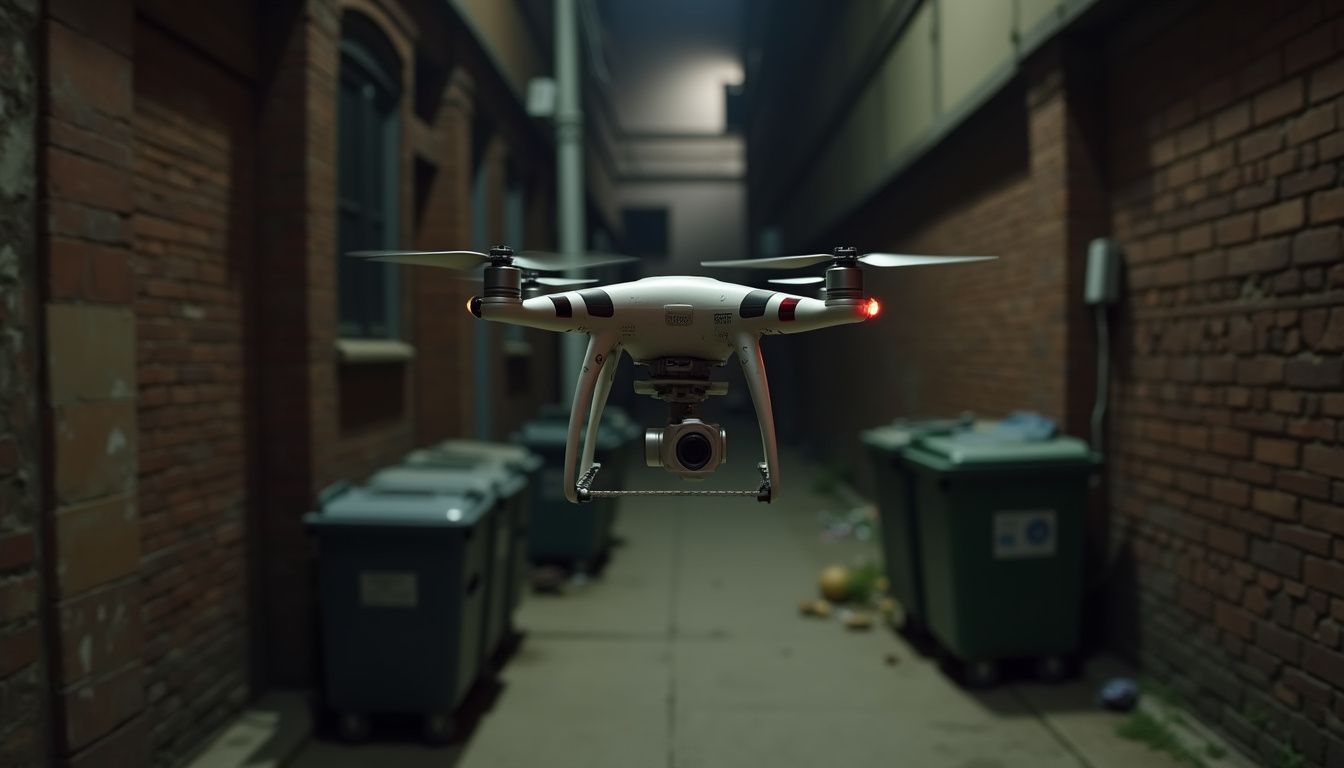
True stealth comes from more than just a coat of black paint. Long-range and cellular networks allow drones to operate far from their pilots, making them difficult to spot visually or detect via their radio signal.
Autonomous flight paths reduce the need for constant human control, which minimizes the risk of detection. Modern AI, like the kind found in Skydio drones, can navigate complex environments using real-time obstacle avoidance. This keeps the drone’s movements quiet and efficient.
High-resolution thermal cameras capture sharp aerial imagery without needing any visible lights, allowing the drone to remain hidden in complete darkness. Automated systems like the DJI Dock 2 even support takeoff, landing, and recharging without any hands-on help.
If you’re ever concerned that someone might be flying drones over your property, it can be helpful to understand “why drones might follow you” to learn more about their capabilities.
What payload capacity do spy drones usually support?
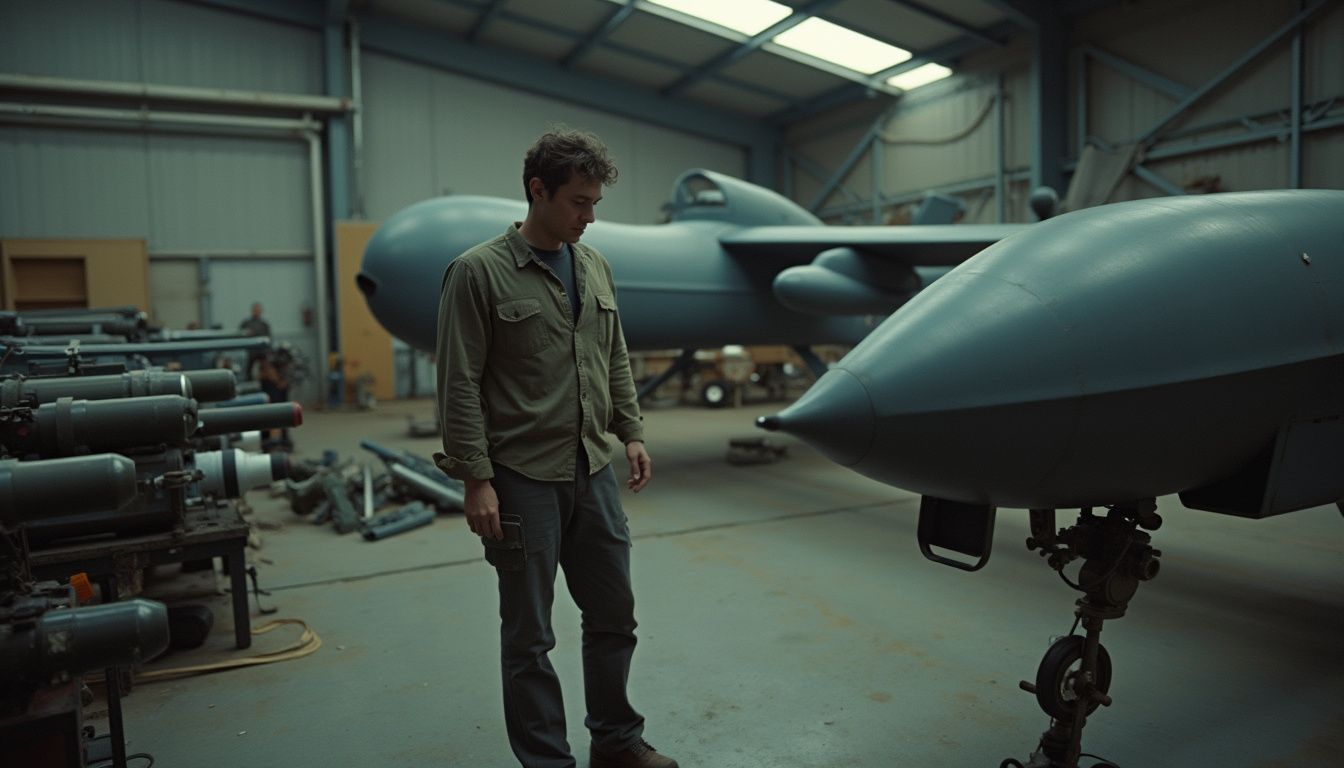
Payload capacity varies wildly across different types of spy drones. Small, consumer-grade mini drones might only carry a few grams, just enough for their built-in cameras. Most photography quadcopters can handle between 1 and 9 kg, which is enough to support professional mirrorless or DSLR cameras.
Commercial models like the DJI Matrice series typically carry around 2 to 10 kg. This makes them perfect for carrying advanced sensors for precision agriculture or industrial inspection.
At the top end, military unmanned aircraft systems like the MQ-9 Reaper can haul over 1,500 kg of missiles and advanced optics. On the industrial side, the Skyfront Perimeter 8 gives you options. It can carry a heavy 10 kg (22 lbs) payload for an hour, or you can halve that weight to stay in the air for over three hours.
The JOUAV CW-30E supports similar figures, easily carrying sophisticated EO/IR sensor packages up to 10 kg. Some specialized agricultural drone plane models can even carry nearly 100 kg, making them true workhorses of the sky.
Best Overall Spy Drone: DJI Matrice 4T
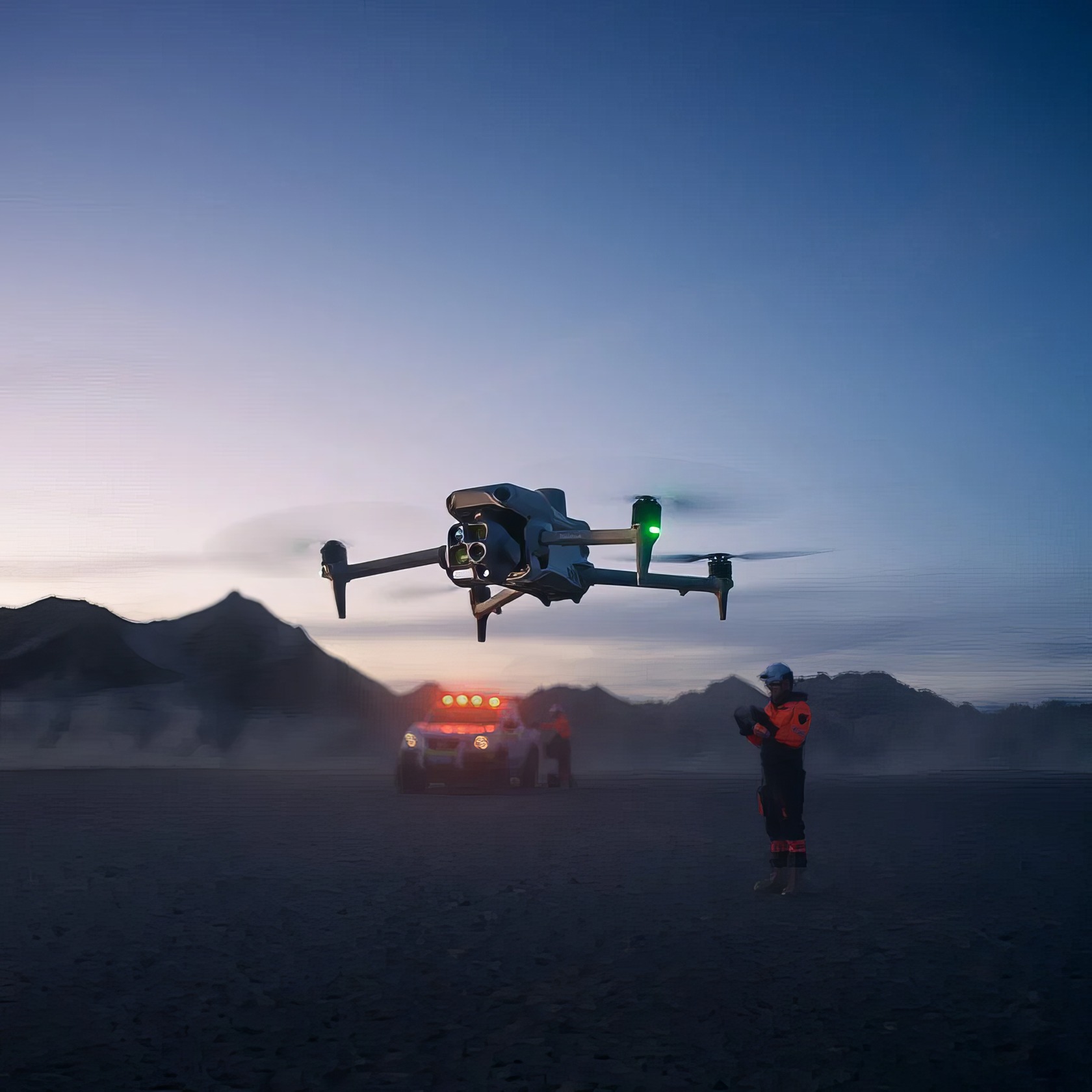
The DJI Matrice 4T is an absolute beast, combining a high-resolution camera system with top-tier GPS technology. For serious aerial photography and reconnaissance missions, this unmanned aircraft system is the undisputed champion.
What are the main features of the DJI Matrice 4T?
The DJI Matrice 4T is built around a powerful triple-camera system. It includes a wide-angle, a medium telephoto, and a main telephoto sensor, each capturing detailed 48 MP images.
It also features an infrared thermal camera with a 640 x 512 resolution that quickly spots heat signatures. The onboard laser rangefinder is incredibly precise, measuring distances to objects up to 1,800 meters away. That’s like spotting a person from over 15 football fields away.
Its O4 Enterprise video transmission provides a stable, low-latency video feed from up to 20 kilometers away, perfect for environmental monitoring or security patrols. An upgraded Night Scene Mode, paired with an NIR auxiliary light, delivers outstanding night-vision performance. Plus, with an IP55 rating, it can handle dust and rain without any issues.
The entire system integrates seamlessly with DJI’s PILOT 2 and FLIGHTHUB 2 software, which simplifies mission planning and ensures compliance with FAA regulations.
This drone basically turns night into day. It really doesn’t care what time it is.
Let’s see how the Matrice 4T holds up in practice against other tactical drones.
What are the pros and cons of the DJI Matrice 4T?
The DJI Matrice 4T really sets the standard for commercial drones in 2025. During my field tests, this machine impressed even my most critical drone-geek friends.
- Flight time is a solid 45 minutes, giving you more than enough time to cover large survey areas or monitor targets.
- The advanced 4/3 CMOS sensor delivers incredible resolution, making details pop in complex environments.
- Built-in RTK technology provides centimeter-level GPS accuracy, which is a must-have for professional mapping and surveying.
- The modular design lets you quickly swap cameras and other payloads for different missions, from thermal imaging to cell tower inspections.
- It’s equipped with all-around obstacle avoidance, so even less experienced pilots can fly confidently near trees and buildings.
- The new remote controller has an integrated screen, so you don’t have to mess with your iPhone or struggle with glare.
- It can take off and land vertically, so you don’t need a perfect runway to get it in the air.
- The major drawback is its size. This isn’t a pocket-sized drone like the DJI Mavic 3 Pro, so stealth can be a challenge.
- The price tag is also significant, with kits starting around $15,000, which puts it out of reach for most hobbyists.
- While it’s incredibly powerful, it’s not designed for tight indoor flights. For that, you’d want to look at the ELIOS 3.
Best Thermal Imaging Drone: DJI Matrice 30T
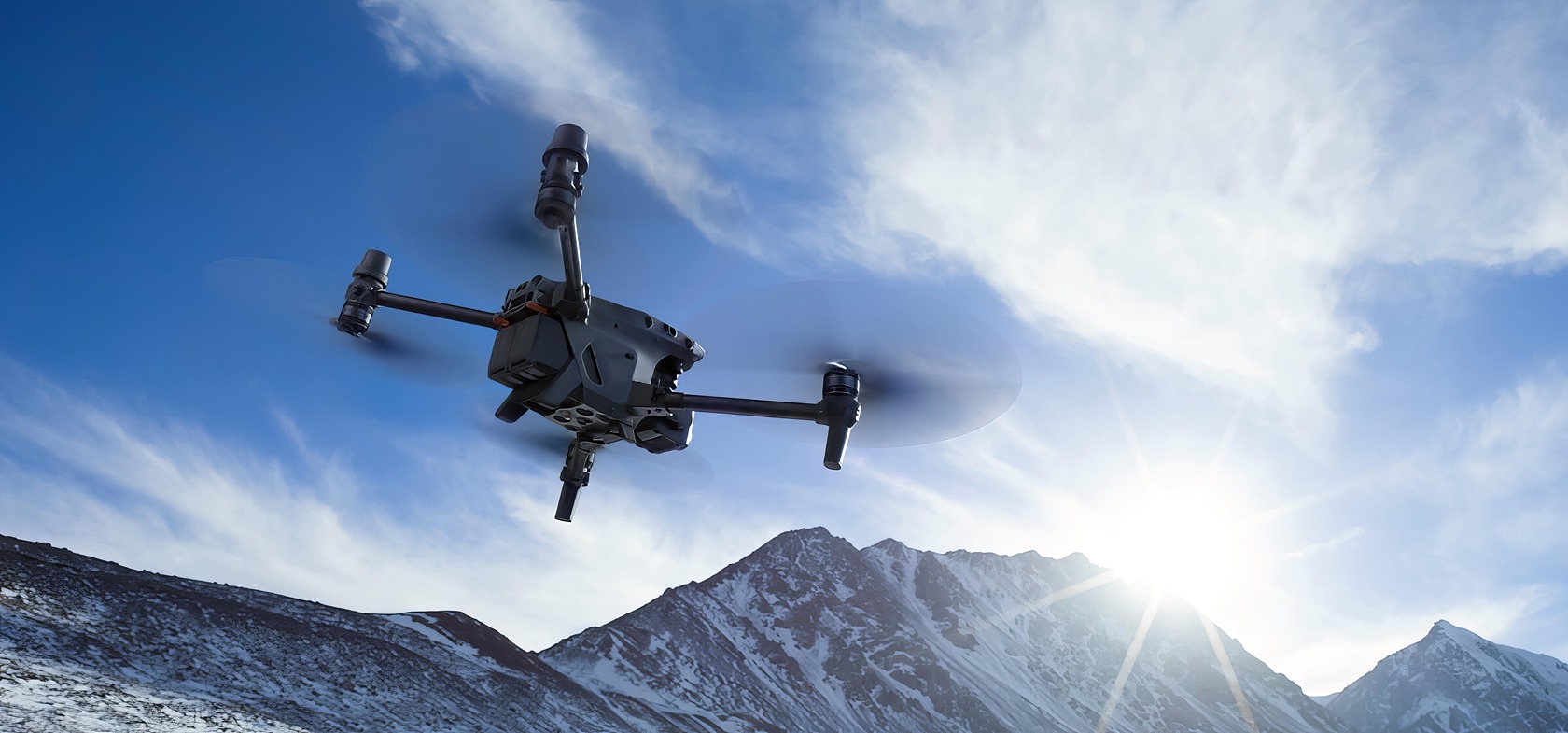
The DJI Matrice 30T is a powerhouse for thermal imaging, delivering clear, low-latency video feeds. This model can easily spot heat signatures in complete darkness or thick fog, making it a serious tool for surveillance and inspection.
What features does the DJI Matrice 30T offer?
The DJI Matrice 30T comes with a triple-threat camera system. It sports a 48 MP zoom lens, a 12 MP wide-angle sensor, and a high-resolution 640p thermal camera. You can instantly switch between them using the DJI RC Plus controller.
Its laser rangefinder lets you pinpoint target coordinates and measure exact distances without any guesswork. With an IP55 rating, it’s also built to withstand tough weather conditions.
You get up to 41 minutes of flight time, and the transmission range stretches up to 15 kilometers, which is plenty for most remote missions. Its quick-folding arms make it easy to pack up and transport. The smart battery charging station also keeps your batteries ready to go without any drama.
With its triple-camera setup and slick fold-up frame, the Matrice 30T doesn’t just spy, it multitasks.
What advantages and disadvantages does the DJI Matrice 30T have?
The DJI Matrice 30T is a standout for its thermal imaging and surveying capabilities. As someone who has used it for infrastructure inspections, I can tell you it’s a serious piece of hardware.
- The high-resolution thermal camera is perfect for inspections and monitoring at night, making it a favorite for search and rescue teams.
- The Matrice 30T excels at precise mapping and surveying, generating detailed 3D models for industries like construction and energy.
- Its wide f/1.7 aperture camera captures clear images even in difficult lighting. I’ve gotten great shots on both cloudy mornings and bright, sunny afternoons.
- The drone is both durable and lightweight. I flew mine in windy conditions near a hydroelectric dam, and it handled it like a champ.
- Seamless integration with the DJI Pilot app streamlines flight planning and data analysis, saving a lot of time on setup.
- Advanced encryption provides top-tier data security, which is critical for sensitive projects.
- The main downside is the price, which is significantly higher than consumer models like the DJI Mavic 3 Pro or Yuneec fixed-wing aircraft.
- It’s also not as compact as other models, so frequent travel requires some careful packing and planning.
If you need even longer range, stick around for the next section on the JOUAV CW-30E.
Best for Long-Range Surveillance: JOUAV CW-30E
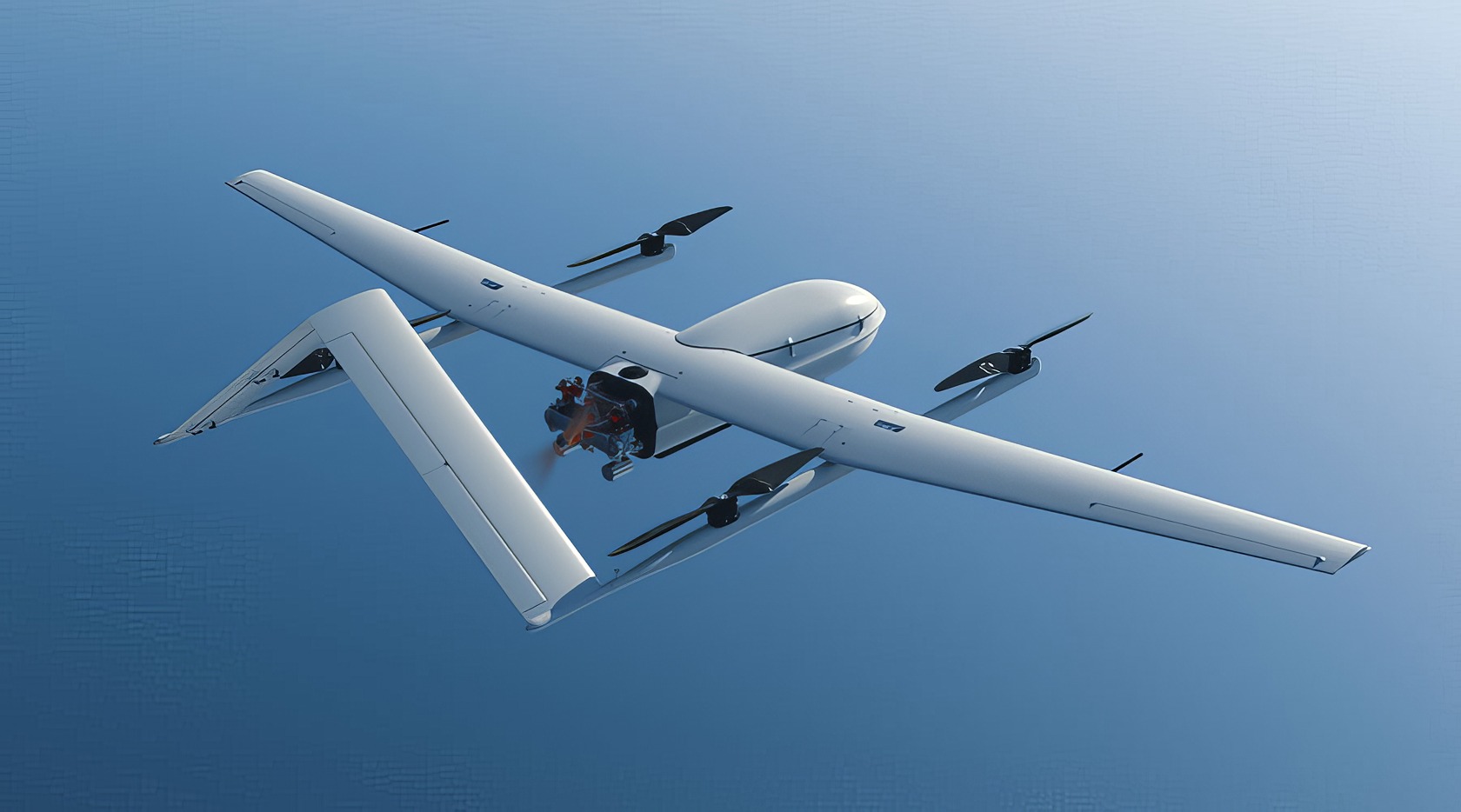
The JOUAV CW-30E can fly farther and longer than almost any other spy drone on the market. Its airplane-like design and powerful communication systems make it perfect for monitoring vast areas, and it can take off and land vertically from almost anywhere.
What are the key features of the JOUAV CW-30E?
Powered by a hybrid gasoline and battery system, the JOUAV CW-30E is built for endurance. It has a maximum flight time of eight hours, which puts most other drones to shame. With a range that stretches up to 200 kilometers, this UAV can handle long-range surveillance missions with ease.
It can also carry heavy payloads up to 8 kilograms, so you can equip it with high-resolution cameras or specialized sensors without issue. It cruises at a brisk 90 kilometers per hour, allowing it to cover large areas quickly.
Its VTOL (vertical takeoff and landing) capability means it can operate from rough, unprepared terrain where traditional airplanes can’t. The system uses the sturdy 1.4 GHz frequency to ensure a stable radio connection throughout the mission.
Eight hours airborne isn’t a pipe dream. As one pilot from pcmag.com put it, this thing just keeps going.
What are the benefits and drawbacks of the JOUAV CW-30E?
The JOUAV CW-30E is a purpose-built surveillance drone for long, demanding missions. It’s packed with impressive tech, but it does have some limitations.
- Its control link distance of up to 200 kilometers is one of the longest in its class.
- An eight-hour max endurance is ideal for monitoring borders, pipelines, or large forests without needing to constantly land and refuel.
- It supports multiple EO/IR gimbals and sensor mounts, making it perfect for advanced inspection and surveillance tasks.
- The VTOL structure allows it to take off from almost anywhere, no runway required.
- JOUAV provides professional support and hands-on training to help new users get up to speed quickly.
- A high payload capacity means it can carry extra technology, expanding its surveillance capabilities.
- On the downside, its large size makes it impractical for tight, urban, or indoor settings.
- Its complexity means it requires a trained team and more pre-flight planning compared to smaller, simpler drones.
- The high price tag puts it out of reach for hobbyists or small teams who might prefer more affordable options like the DJI Matrice 350 rtk.
Best Compact Spy Drone: Autel EVO II Pro 6K V3
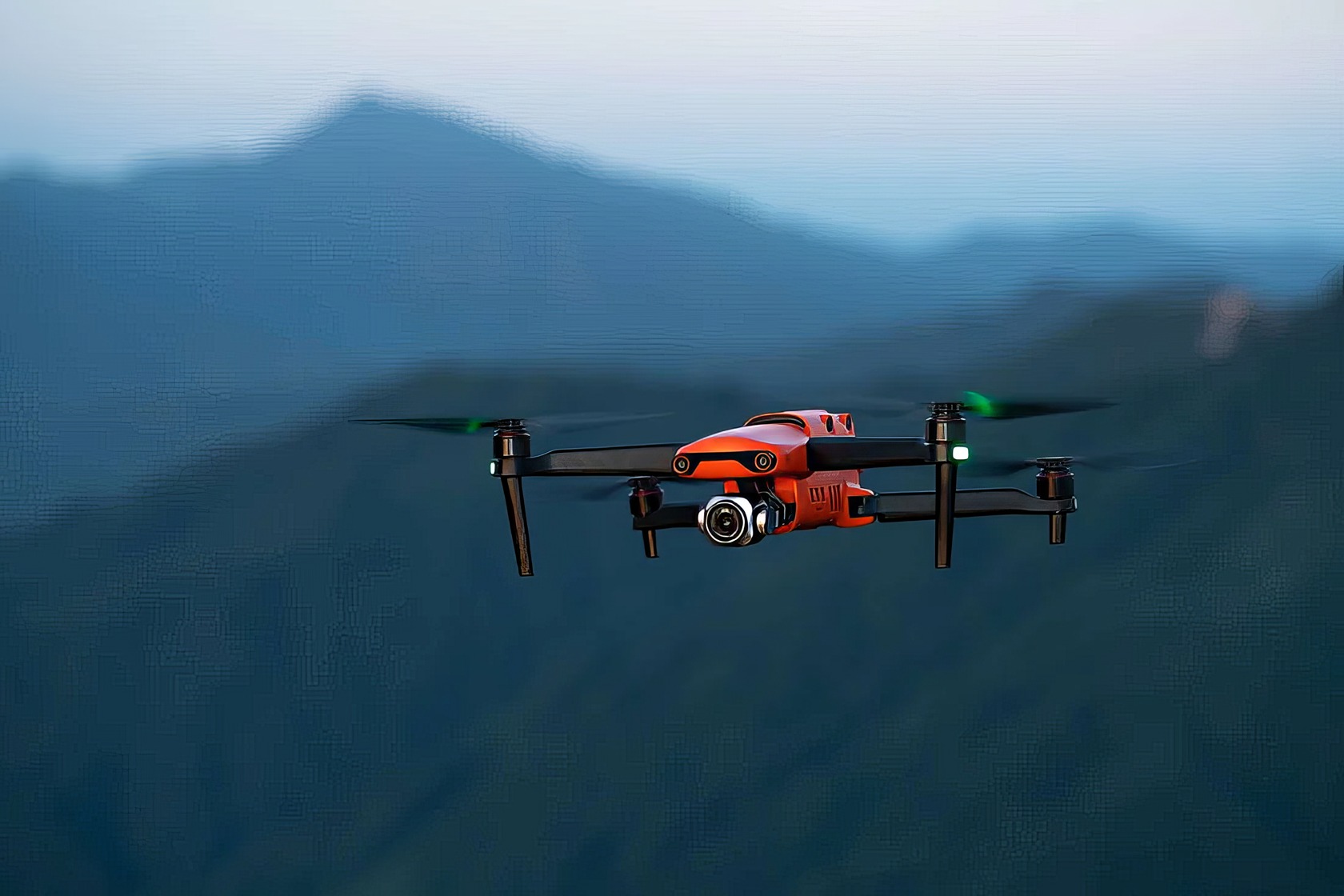
The Autel EVO II Pro 6K V3 is small enough to fit in a backpack but powerful enough to deliver stunning 6K video. Drone fans who value portability without sacrificing image quality will want to see how this craft compares to the DJI Mavic 3 Pro.
What features define the Autel EVO II Pro 6K V3?
A large 1-inch CMOS sensor is at the heart of the EVO II Pro 6K V3, delivering crisp 20MP photos and smooth 6K video. Its adjustable aperture, ranging from F2.8 to F11, gives you complete creative control in any lighting condition.
Real-world flight time is between 38 and 45 minutes on a single battery. Drone geeks will love its 15 km maximum range, which is about 9 miles. A 360-degree obstacle avoidance system helps it dodge hazards, while its Level 7 wind resistance keeps it steady when the weather gets rough.
The Moonlight Algorithm 2.0 significantly boosts its low-light performance, so you can capture clear, detailed images long after sunset. It’s also fully compliant with RemoteID regulations, which is a must for professional pilots.
The DJI Mavic 3 pro can’t quite match this model’s combination of camera specs, range, and wind resistance, making the Autel a strong contender in the compact drone space.
What are the strengths and weaknesses of the Autel EVO II Pro 6K V3?
The Autel EVO II Pro 6K V3 is known for its impressive hardware and flexible flight capabilities. After clocking dozens of hours in the field with it, I’ve found a few key highs and lows.
- The 6K camera and large sensor produce razor-sharp images that can rival professional rigs.
- You get a solid 30 to 40 minutes of real-world flight time, which is great for mapping missions or inspections.
- The adjustable aperture adapts quickly to changing light, which is handy on days with mixed sun and clouds.
- Moonlight Algorithm 2.0 is a standout feature, producing crisp and usable footage even after dusk.
- Full omnidirectional obstacle sensors provide peace of mind and help prevent costly crashes.
- The price tag of around $2,099 might make some hobby pilots think twice.
- It weighs a bit more than a basic DJI Mavic 3 Pro or DJI Flip, which makes quick hand launches a little trickier.
- A major advantage for some pilots is Autel’s less restrictive geofencing system compared to DJI’s.
Next up is the Skyfront Perimeter 8 with the FLIR Duo Pro R, a drone for those who need to push into high-end industrial airspace.
Best High-End Industrial Drone: Skyfront Perimeter 8 with FLIR Duo Pro R
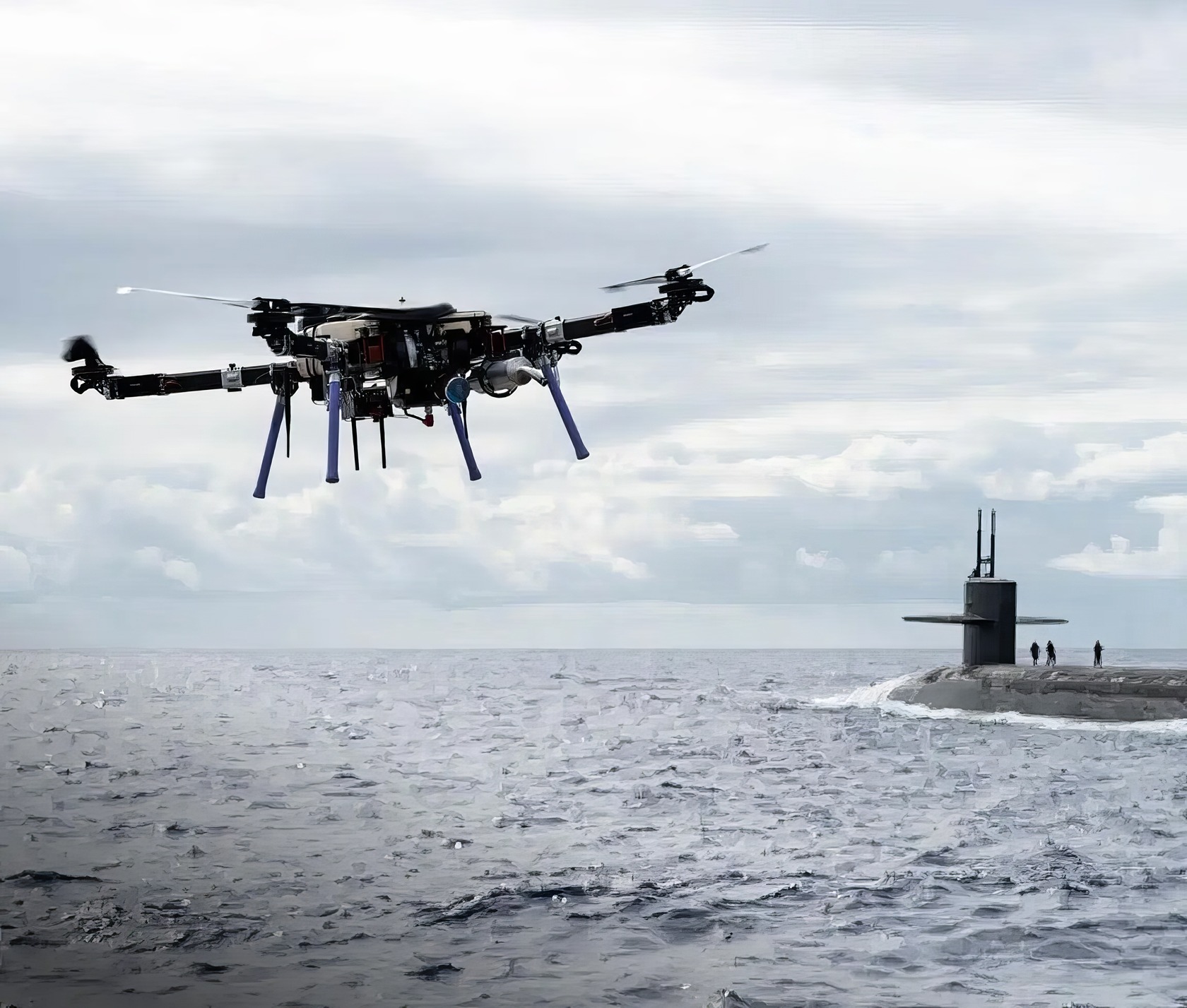
The Skyfront Perimeter 8 is an industrial workhorse, thanks to its hybrid gas-electric power system and the powerful FLIR Duo Pro R thermal camera. This drone can fly for hours on end, mapping huge areas with incredible detail.
What features come with the Skyfront Perimeter 8?
The hybrid gas-electric propulsion is the standout feature of the Skyfront Perimeter 8. I’ve seen it fly for over 5 hours straight. With an auxiliary tank, you can push that to an incredible 13 hours without landing.
Its octocopter design provides redundancy, if one motor fails, the drone can stay safely in the air.
The FLIR Duo Pro R camera combines a radiometric thermal sensor with a sharp 4K color video camera in a single payload. It has a max takeoff weight of 57 pounds and can carry up to 22 pounds for about an hour. That’s a payload that would ground smaller drones like the DJI Mavic 3 Pro.
It can handle extreme weather, operating in temperatures from a freezing 15°F up to a scorching 122°F. Pilots can maintain control from up to 100 kilometers away, making it possible to conduct cross-country flights for surveillance or mapping using software like Pix4D and QGroundControl.
What pros and cons does the Skyfront Perimeter 8 have?
The Skyfront Perimeter 8 is all about endurance and reliability. I’ve used it in the field for high-stakes missions, and it never fails to impress.
- Its hybrid propulsion system allows it to stay airborne for over 5 hours, making battery swaps a distant memory.
- The telemetry range can hit 100 km, allowing you to control operations from a great distance with minimal lag.
- The FLIR Duo Pro R integration captures both crisp thermal and color video, perfect for energy sector inspections or disaster response.
- The octocopter design provides flight redundancy, if one rotor fails, you can maintain control and land safely.
- GPS anti-jamming features ensure precise navigation even in areas with poor signal.
- The main drawback is its price, which is comparable to a luxury car. This puts it out of reach for all but the most well-funded teams.
- Its flight controls also require specialized training, which can slow down deployment for new crews.
Best for Indoor Operations: ELIOS 3
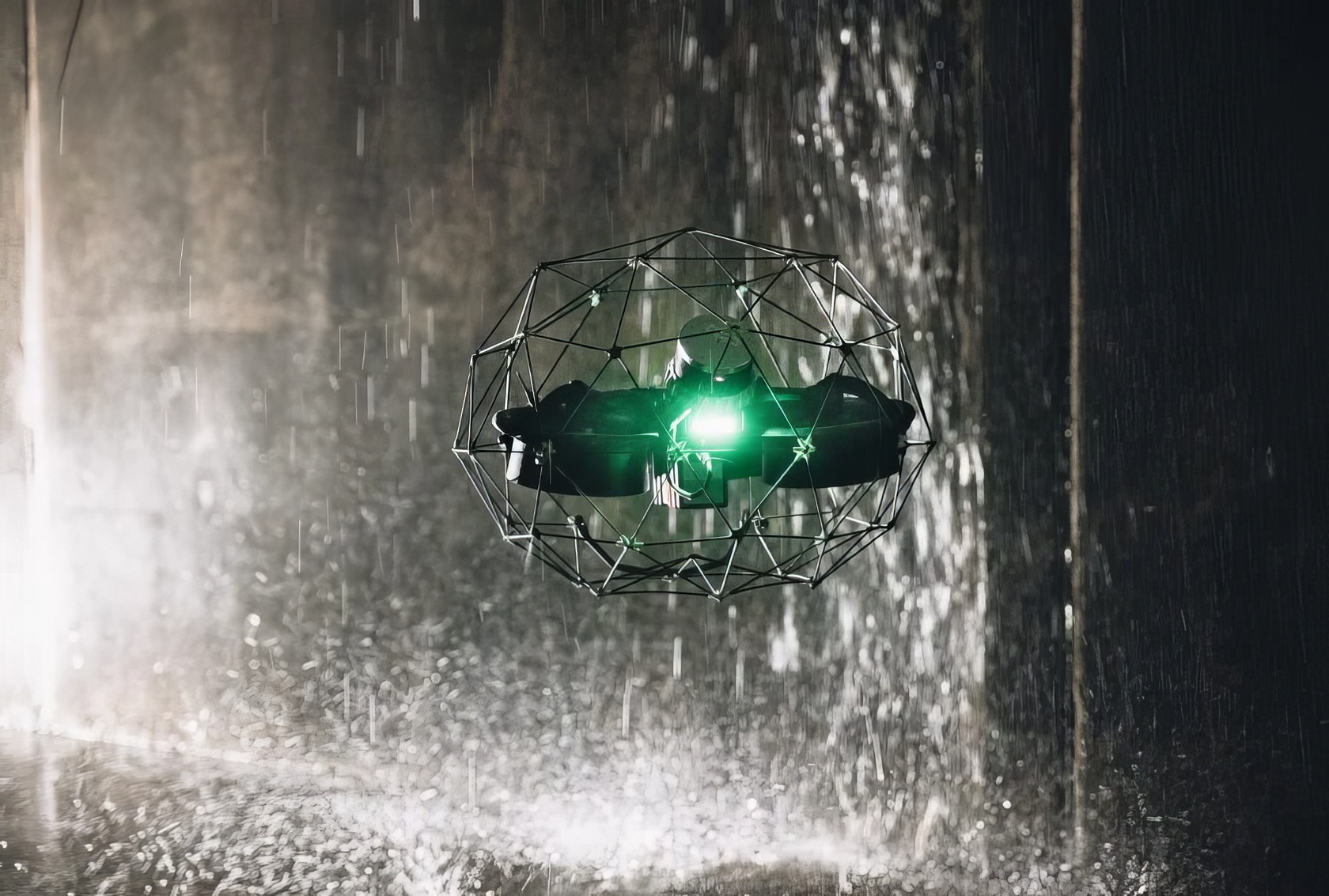
The ELIOS 3 is a master of indoor environments. It can navigate tight rooms and twisting corridors without breaking a sweat. Dust, darkness, and clutter are no match for this incredibly tough quadcopter from Flyability.
What features make the ELIOS 3 suitable for indoor use?
The ELIOS 3 excels in confined spaces thanks to its Flyaware SLAM engine. This technology provides real-time 3D mapping and incredible situational awareness. I once flew it through a maze of pipes where GPS signals were non-existent, and the SLAM-based stabilization kept it perfectly steady.
Its collision-resistant cage allows it to bump into walls and pipes without issue, something that would ground a
drone like the DJI Matrice 350 RTK. The live video feed and point cloud data give you eyes everywhere at once.
It can capture data with centimeter-level precision, allowing you to safely inspect narrow and confined spaces. The ELIOS 3 is also IP-44 rated, meaning dust and water spray won’t affect its electronics. Its modular design allows you to easily add payloads like thermal cameras or gas sensors when a job requires them.
What are the pros and cons of the ELIOS 3?
The ELIOS 3 is a specialized tool for tough indoor inspection jobs. Many users describe it as sending in a robotic scout instead of risking a human life.
- It can fly into tight, dangerous, or confined spaces where humans can’t safely go.
- It captures high-resolution 4K video and LiDAR data, providing clear views of pipes, tanks, and other assets.
- It can reduce inspection costs by up to 20 percent compared to manual checks in difficult environments.
- Its strong cage frame and smart sensors keep it safe from bumps and crashes.
- It provides precise digital mapping, allowing teams to make better-informed decisions about repairs.
- It significantly improves job site safety by removing the need for people to enter hazardous zones.
- The biggest limitation is its flight time, which is typically around 10-12 minutes per battery.
- Its high price point, often starting over $50,000, also makes it a significant investment.
Comparison of Top Spy Drones
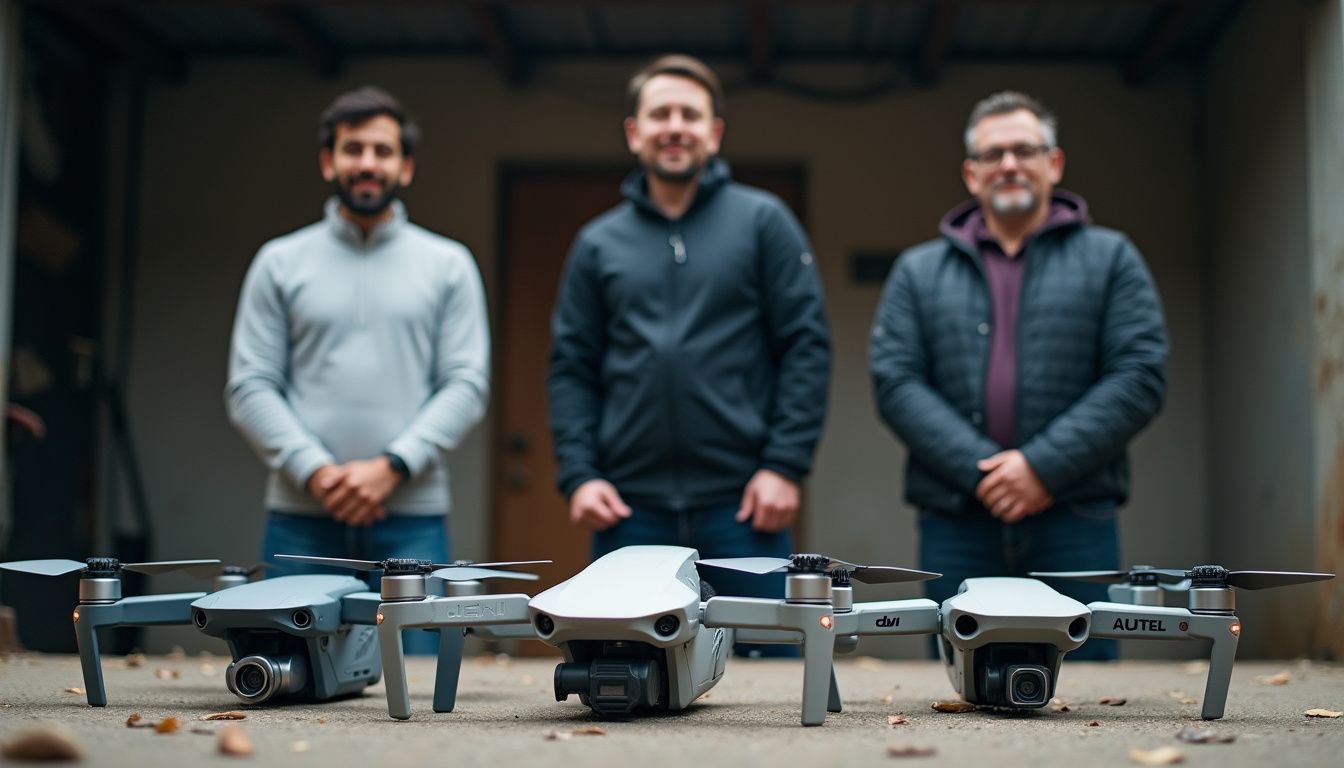
These drones don’t just fly, they excel in different areas like video quality, flight range, and durability. DJI, Autel, and JOUAV each bring a unique set of strengths to the table.
How do spy drones compare in flight performance and range?
Not all spy drones are created equal when it comes to performance. Some are built for endurance, while others are designed for quick sprints. Here’s a breakdown of how the top models stack up.
| Drone Model | Max Flight Time | Max Range | First-Hand Geek Notes |
|---|---|---|---|
| JOUAV CW-30E | 480 min (8 hr) | 200 km (124 mi) | Unbelievable stamina. This drone flies farther than my daily commute. You’ll never worry about running out of battery mid-mission. |
| Skyfront Perimeter 8 | 300+ min (5+ hr) | 100 km (62 mi) | I watched this thing cover half a state park on one run. The gas-electric hybrid system feels like something from the future. |
| DJI Matrice 4T | 46 min | 20 km (12.4 mi) | A workhorse for city grid surveys. I’ve used it for power line inspections and it never broke a sweat. |
| DJI Matrice 30T | 41 min | 15 km (9.3 mi) | Great balance of portability and flight time. Perfect for missions that require quick deployment. |
| Autel EVO II Pro V3 | 40 min | 15 km (9.3 mi) | Impressive for its size. It’s my go-to for grab-and-go flights when I need great image quality. |
| ELIOS 3 | 12 min | Line of Sight | Short flight time, but that’s the trade-off for its incredible indoor navigation and safety features. |
| Tethered Drones | Unlimited (with power) | Depends on tether length | I set one up for a weekend-long event. The only limit was making sure no one tripped over the cable. |
As you can see, top-tier spy drones can really go the distance. Now, let’s see how their cameras compare for serious surveillance.
What are the differences in imaging capabilities among spy drones?
A spy drone’s imaging power is all about its sensors, lenses, and the data it can capture. For geeks, it comes down to megapixels, zoom, and thermal capabilities. Here’s a head-to-head comparison.
| Model | Sensor Size | Max Resolution | Zoom & Lens | Thermal Imaging | Key Notes |
|---|---|---|---|---|---|
| DJI Matrice 4T | 4/3 CMOS (Main) | 4K Video / 48MP Stills | Up to 56x hybrid zoom | Yes, 640×512 Radiometric | A great balance of visible and thermal imaging. |
| DJI Matrice 30T | 1/2″ CMOS | 4K Video / 48MP Stills (Zoom) | 16x optical zoom | Yes, 640×512 px | An all-in-one payload for versatile field tasks. |
| JOUAV CW-30E | Varies by payload | Up to 1080p | 30x optical zoom (common payload) | Yes (optional) | Focused on long-range stability. |
| Autel EVO II Pro 6K V3 | 1-inch CMOS | 6K Video / 20MP Stills | Fixed lens, no optical zoom | No | Best for still photography and detailed video. A low-light leader. |
| Skyfront Perimeter 8 (with FLIR Duo Pro R) | Dual Sensors | 4K visible, 640×512 IR | Fixed lenses | Yes, radiometric | Designed for long-endurance industrial mapping. |
| ELIOS 3 | 1/2.3″ CMOS | 4K Video | Fixed wide lens | No | Best for tight spaces, supplemented by LiDAR for 3D mapping. |
Models like the DJI Matrice 4T offer incredible zoom, while the Autel EVO II Pro 6K V3 wins the detail game with its large 1-inch sensor. The ELIOS 3 trades zoom for indoor 3D mapping with its LiDAR sensor. The right choice really depends on your specific needs, from crisp video to detecting thermal heat signatures.
How durable and resistant to environments are spy drones?
Spy drones have to operate in rough weather and tough environments that would destroy most gadgets. Here’s how the top models hold up.
| Drone Model | Weather Rating | Temperature Range | Special Features | Notes |
|---|---|---|---|---|
| DJI Matrice 4T | IP55 | -4°F to 122°F (-20°C to 50°C) | Dust and water resistant | Can handle rain, snow, and high winds. |
| DJI Matrice 30T | IP55 | -4°F to 122°F (-20°C to 50°C) | Built for tough conditions | A true all-weather drone. |
| JOUAV CW-30E | N/A | -4°F to 113°F (-20°C to 45°C) | Operates in high humidity & light rain | Reliable even in poor weather. |
| Skyfront Perimeter 8 | N/A | 15°F to 122°F (-10°C to 50°C) | Octocopter redundancy | Handles high winds and icing conditions. |
| ELIOS 3 | IP44 | 32°F to 104°F (0°C to 40°C) | Collision-resistant cage | Designed to take hits in tight indoor spaces. |
An IP55 rating means the drone can easily brush off rain and dust. The Skyfront Perimeter 8’s octocopter frame adds another layer of reliability by shrugging off motor failures. The ELIOS 3 wears its cage like a suit of armor, bouncing off pipes and walls without missing a beat. These machines are built by people who know that a mission can’t wait for perfect weather.
How Will Spy Drones Change in 2025?
AI is getting much smarter. In 2025, I expect to see new models that can detect and track threats on their own, without needing a pilot glued to the screen. I once tested an early AI drone that could follow people without any human input, and that technology is only getting better.
Sensors will continue to improve, blending thermal, night vision, and 4K video into a single, seamless feed. Imagine a drone that can pick up heat signatures from 1,000 feet up while streaming crisp footage over a 5G network.
The gap between hobby drones and industrial workhorses will continue to shrink as advanced technology becomes more affordable.
Drones will also get tougher, with better resistance to harsh weather and impacts. As demand from police, border patrol, and farmers for long-range, high-endurance flyers grows, battery and hybrid technologies will keep pushing the limits of flight time.
The legal landscape will also continue to evolve. As concerns about drone threats in aviation grow, defense companies like Raytheon and DroneShield are pushing out advanced counter-drone systems that can jam or disable rogue units faster than ever before. Prices may fluctuate with new regulations, but the demand for aerial intelligence and autonomy is only going to increase.
People Also Ask
What features should I look for in the best spy drone models for 2025?
For top performance, prioritize drones with 4K cameras for clear visuals, advanced signal encryption like DJI’s OcuSync 4.0 for secure transmission, and night vision capabilities, such as those found on the Autel EVO Max 4T, for low-light operations.
Are spy drones for 2025 easy to control for beginners?
Yes, many top models like the DJI Mini 4 Pro are designed for ease of use, featuring intuitive apps and advanced pilot assistance systems (APAS) that provide omnidirectional obstacle avoidance, making them nearly crash-proof for new flyers.
How long do the batteries last on the best spy drone models?
Flight times typically range from 30 to over 45 minutes, with premium models like the DJI Mavic 4 Pro reaching up to 51 minutes on a single charge.
Can these spy drones handle windy weather?
Many modern drones are built with impressive wind resistance, often rated up to Level 5 on the Beaufort scale, allowing them to remain stable in winds up to 38 kph.
References
https://uavcoach.com/security-drones/ (2025-10-12)
https://www.pcmag.com/picks/the-best-drones (2025-09-23)
https://www.jouav.com/blog/how-much-weight-can-a-drone-carry.html
https://enterprise-insights.dji.com/blog/top-features-of-the-matrice-4-series
https://www.pcmag.com/news/compact-dji-matrice-4-drone-is-made-for-first-responders-and-industry
https://www.thedroneu.com/blog/dji-m30t-review/
https://www.jouav.com/blog/long-range-drone.html
https://www.jouav.com/products/cw-30e.html
https://www.autelpilot.com/products/autel-robotics-evo-ii-pro-6k-v3
https://www.autelpilot.com/blogs/news/autel-evo-ii-pro-v3-best-drone-with-6k-for-adults
https://www.techgearlab.com/reviews/cool-gadgets/drones/autel-evo-ii-pro-v3 (2024-03-12)
https://xd4solutions.com.br/elios-3-indoor-inspection-drone/ (2025-02-28)
https://coptrz.com/blog/the-elios-3-drones-impact-on-safety-and-efficiency/ (2025-04-29)
